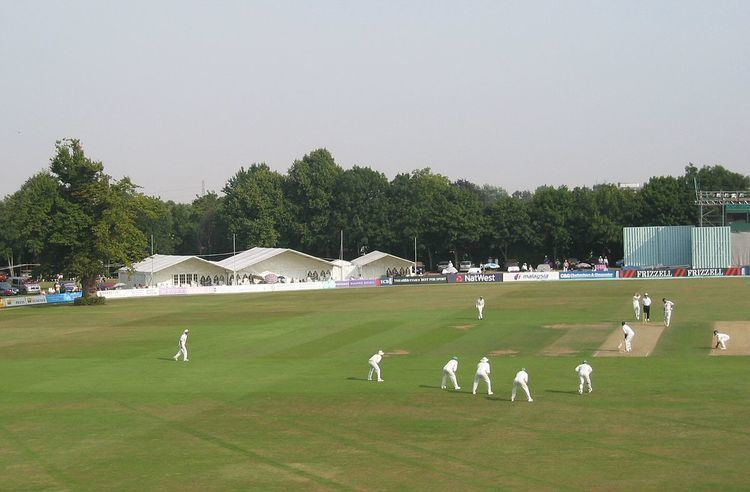Establishment 1847 | Capacity 7,000 | |
 | ||
Hours Open today · 8AM–3:30PMFriday8AM–3:30PMSaturday8AM–2PMSundayClosedMonday8AM–3:30PMTuesday8AM–3:30PMWednesday8AM–3:30PMThursday8AM–3:30PMSuggest an edit Similar 1st Central County Ground, County Cricket Ground, County Cricket Ground, Nevill Ground, Bristol County Ground | ||
St lawrence ground canterbury
The St Lawrence Ground is a cricket ground in Canterbury, Kent, referred to as the Spitfire Ground, St Lawrence due to commercial sponsorship, and is the home of Kent County Cricket Club. It is one of the oldest grounds on which first-class cricket is played, having been in use since 1847. It is also notable as one of the two grounds used regularly for first-class cricket that have a tree within the boundary (the other is the City Oval in Pietermaritzburg).
Contents
Capacity at the ground was increased to 15,000 in 2000, and four One Day International matches have been played there, one each in 1999 (part of the 1999 Cricket World Cup), 2000, 2003 and 2005.
Tree
Cricket grounds in most parts of the world are devoid of any trees or shrubs. The lime tree at the St Lawrence Ground was an exception: the ground opened as the Beverley Ground in 1847, and was built around the tree. The presence of a tree within the playing area required special local rules. Shots blocked by the tree were counted as a four. Only four cricketers have cleared the tree to score a six: Arthur 'Jacko' Watson of Sussex in 1925, the West Indies' Learie Constantine (1928), Middlesex's Jim Smith (1939), and Carl Hooper (1992).1
The tree was diagnosed with heart rot in the 1990s, and it was pollarded to encourage new growth, reducing it from over 120 feet to around 90 feet in height. Unfortunately, high winds in England on 7 January 2005 caused the 200-year-old tree to snap in two, leaving a 7-foot stump. Wood from the dead tree will be made into mementos that will be sold to supporters. A new lime tree was planted outside of the playing area in 1999 by EW Swanton, in preparation for the ultimate demise of its predecessor. The club moved it within the playing area on 8 March 2005, although it was still less than 6 feet high.
Ground development
The club announced in late 2006 that it would redevelop the ground. The planned £9 million development would include a hotel, health and fitness centre and conference facilities. The pavilion and other stands would also be upgraded. Money for the project would be raised by the building of private housing on the nets behind the pavilion and on the car park of the local pub, the Bat and Ball. These plans were put on indefinite "hold" in 2008 because of the credit crisis, the fall in the property market and other problems in the British economy. Plans were resurrected in summer 2009 and work started in September 2010.
In March 2010, the club confirmed that Bellway would be its housing partner for the redevelopment project. This included a hotel, conference facilities, a health and fitness centre, hospitality boxes, stand refurbishment, floodlights and retail units.
In 2011, an oil painting of the cricket ground by Albert Chevallier Tayler showing Kent playing Lancashire in 1906 was sold by the club at Sotheby's for £600,000 after it became too expensive to insure. It now hangs in the Long Room at Lord's.
On 14 March 2012, a new Sainsbury's Local convenience store opened, occupying the ground floor of the new club administration building, alongside a cafe.
In 2013, the club announced they had been unable to find a partner for the hotel and fitness centre, and instead hoped to build 60 retirement flats. Canterbury City Council initially rejected the planning application in late 2014, but construction began in 2016.
Stands
The ground includes five stands, two of which named after famous Kent cricketers. The Frank Woolley Stand is currently the feature of a fund-raising appeal to replace it. The Colin Cowdrey Stand, the Chiesman Pavilion and the Annexe Stand are the others.
The Les Ames Stand, closest to the Nackington Road entrance, has no public seating. It consists of hospitality boxes with the main scoreboard directly above.
